
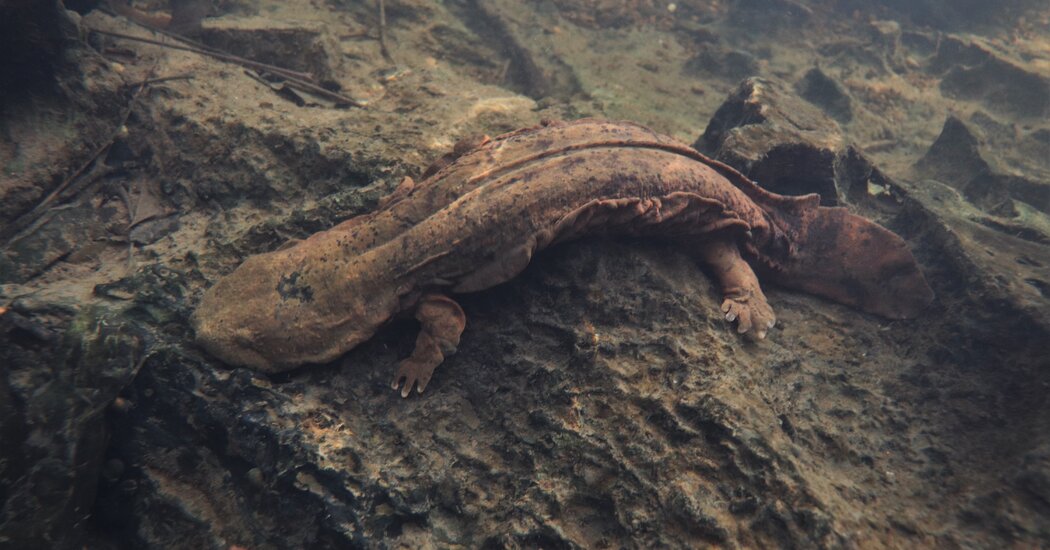
The hellbender salamander has been called a lot of things. Snot otter. Mud devil. Old lasagna sides.
And now, perhaps: baby-eating cannibal, according to new research into the parental habits of these giant amphibians.
An eight-year study of hellbenders living in the cold, rocky rivers of southwestern Virginia has found that male salamanders are increasingly consuming their own young in areas near decimated forests.
Without abutting trees, pollutants flow into the rivers, leading to changes in water chemistry that seem to be altering paternal behavior, the researchers said.
Infanticide is becoming so widespread that eastern hellbenders — the largest salamander in North America, measuring two feet long and weighing up to five pounds — may be on the cusp of eating their future generations into extinction.
“If you have rates of cannibalism this high, then that alone is enough to explain many of the population declines we’ve seen across the species range,” said Bill Hopkins, an ecologist at Virginia Tech who led the research. The findings will appear in a forthcoming issue of The American Naturalist.
Eastern hellbenders once thrived across 15 states, from Mississippi and Missouri in the South and Midwest to New York and Pennsylvania in the Northeast. Their numbers have dwindled over the past 50 years, however, and researchers have struggled to explain why.
Habitat loss, disease, poaching and climate change all probably contribute to some extent. But according to Dr. Hopkins’s research, the driving factor might be baby-eating in response to deforestation.
The practice of eating one’s own offspring, known as filial cannibalism, is common among species that, like the eastern hellbender, have evolved a parenting system in which fathers provide the bulk of early care.
In the fall breeding season, female hellbenders lay their clutch of eggs and take off. Males fertilize the eggs externally and then stick around for months, helping to fend off predators and to keep the eggs healthy until they hatch.
But in the face of hardship, these dedicated dads morph into amphibious Hannibal Lecters, eating up broods with low chances of survival. This act of reproductive sacrifice helps the salamanders conserve energy in lean times and boosts their chances of surviving long enough to make more and stronger babies in the future.
Biologists who study hellbender behavior had previously noted this form of infanticide on occasion. However, Dr. Hopkins’s research suggests that filial cannibalism may be on the rise, with environmental damage — spurred by human activities such as cutting down forests for cattle pastures — likely to blame.
Dr. Hopkins and his colleagues set up hundreds of underwater nest boxes in three rivers dotted across the upper Tennessee River Basin of southwestern Virginia. From 2013 to 2020, they monitored each box, tracking the fate of any egg clusters they found.
They saw that in areas with lush forest cover, dads ate their entire spawn around 14 percent of the time. But this happened more than three times as often wherever nearby trees had been cut down.
The hellbenders seem to have fallen into what Hope Klug, an evolutionary biologist from the University of Tennessee at Chattanooga, described as “an evolutionary trap.”
“They’re exhibiting this behavior that was once adaptive,” she said, “but it’s no longer adaptive due to this really rapid environmental change.”
Shem Unger, a conservation geneticist at Wingate University in North Carolina, said that the findings were alarming. “We need to ensure streams are protected, so that these giants of the rivers remain for future generations,” he said.
Dr. Hopkins’s team also collected blood samples from the hellbenders and looked for changes in stress and reproductive hormones at sites of forest degradation that might account for the uptick in cannibalism. They came up empty-handed. Body condition, clutch size or food availability didn’t seem to be implicated either.
Dr. Hopkins suspects that changes in water chemistry could be spurring the behavioral shift, and he now has sensors in place tracking river conditions to test that hypothesis.
Efforts are ongoing to create forested buffers along streams that reduce erosion, filter pollutants and improve overall water conditions for hellbenders. But in the meantime, Dr. Hopkins is planning to collect vulnerable eggs, raise them in his laboratory and reintroduce them as larvae — past the age when they typically fall prey to their dad’s attack.
“It’s a stopgap,” said J.D. Kleopfer, a herpetologist with the Virginia Department of Wildlife Resources, who is helping to coordinate the effort. “We’re kind of holding the line while the habitat restoration work catches up.”
24World Media does not take any responsibility of the information you see on this page. The content this page contains is from independent third-party content provider. If you have any concerns regarding the content, please free to write us here: contact@24worldmedia.com

Common Mistakes When Using Athletic Field Tarps

High-Performance Diesel Truck Upgrades You Should Consider

Warehouse Optimization Tips To Improve Performance

Fire Hazards in Daily Life: The Most Common Ignition Sources
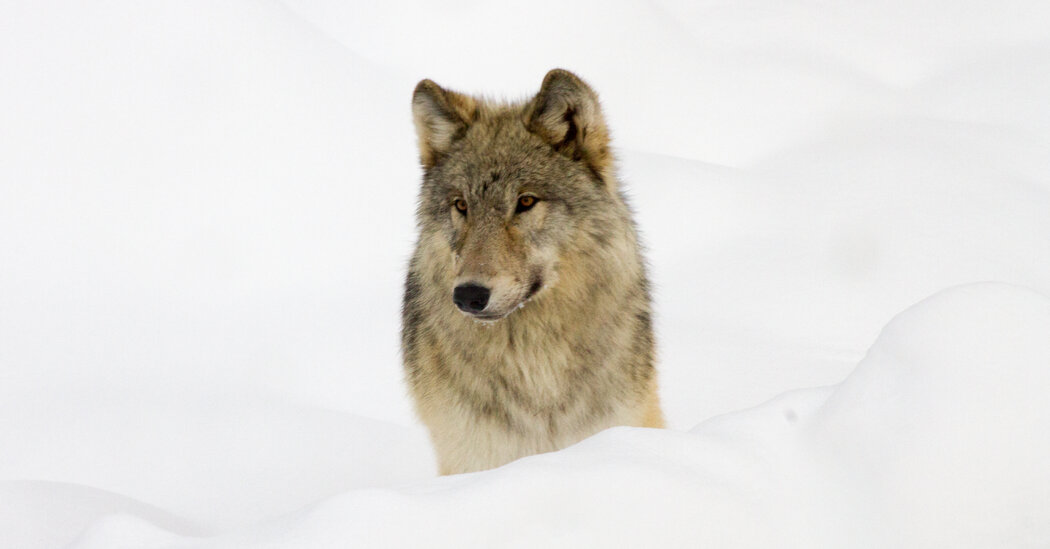
Yellowstone’s Wolves: A Debate Over Their Role in the Park’s Ecosystem
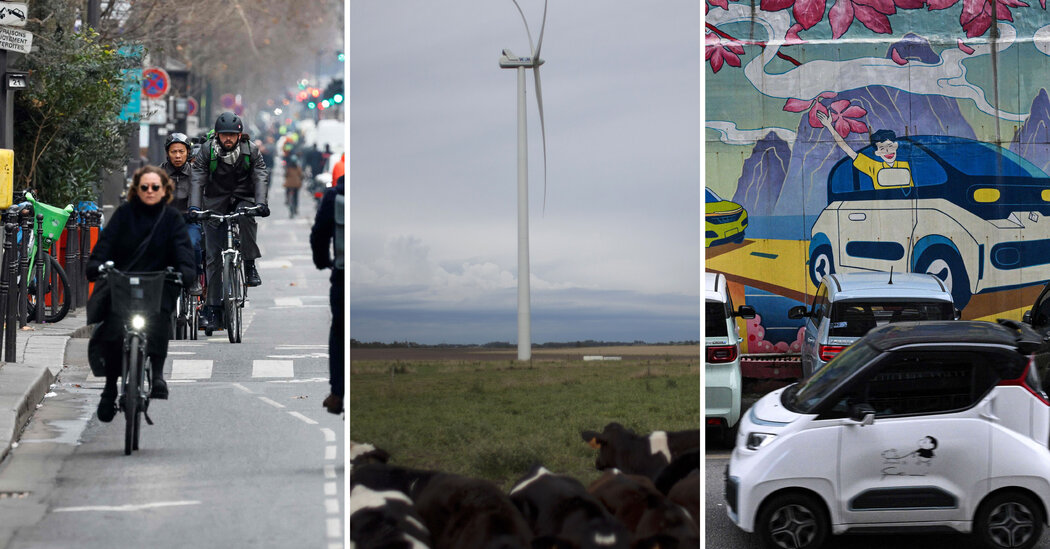
Earth Day 2024: A Look at 3 Places Adapting Quickly to Fight Climate Change

Millions of Girls in Africa Will Miss HPV Shots After Merck Production Problem
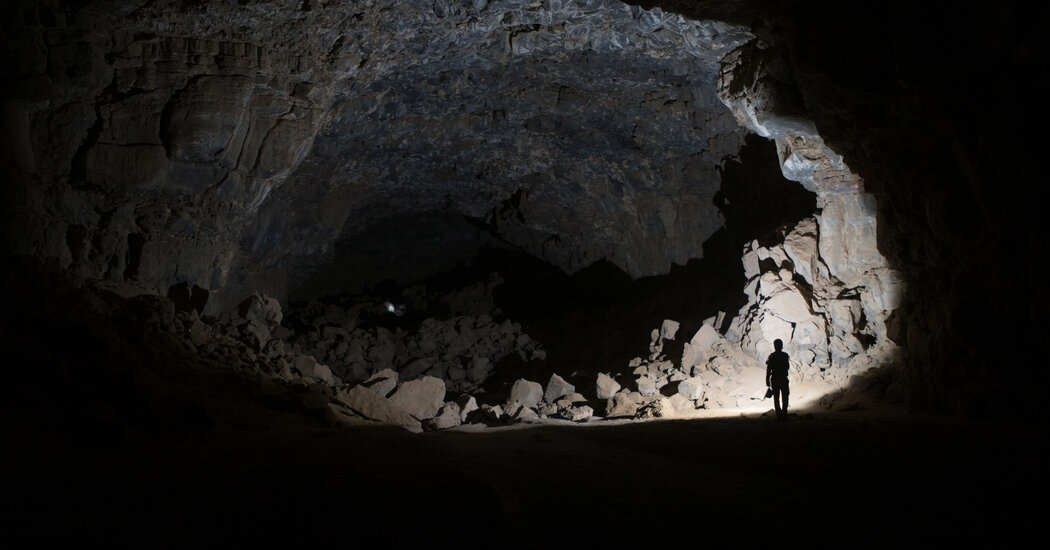
This Lava Tube in Saudi Arabia Has Been a Human Refuge for 7,000 Years
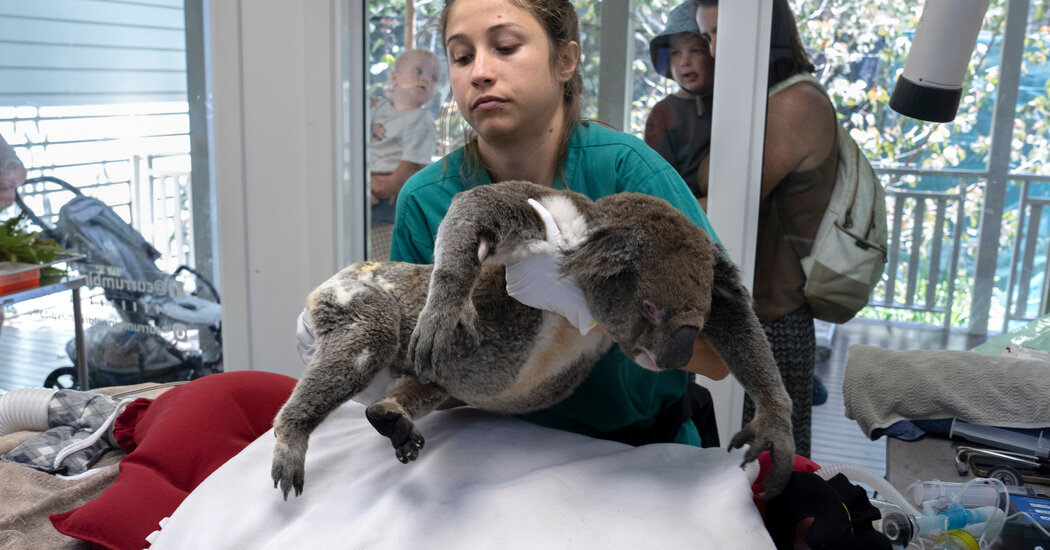
Four Wild Ways to Save the Koala (That Just Might Work)

National Academy Asks Court to Strip Sackler Name From Endowment

Ways Industrial Copper Helps Energy Production

The Ins and Out of Industrial Conveyor Belts